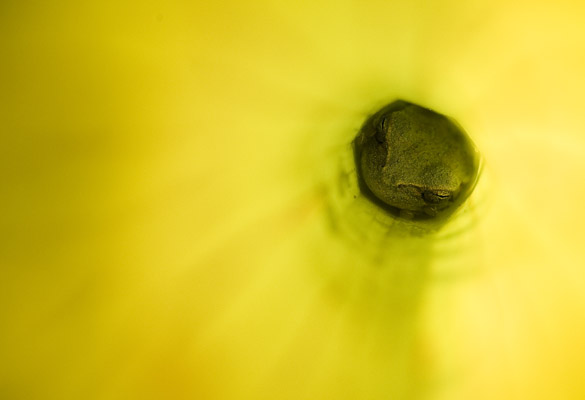A Philosopher's Dozen
Selections from the writings of Stephen Yablo
Singling Out Properties | Take Yellowness
MCDOWELL CLAIMS THAT THE COLORS ARE not "adequately conceivable except in terms of how their possessors would look." By an "adequate" conception of X, let's take him to mean a conception whereby one knows what X is. Then McDowell's claim is that whoever does not conceive redness in terms of how it makes things look does not know what redness is—or, as we might put it, that it is epistemically essential to red to make things look that way. But is this true of red?
The issue for us is the conceptual one of whether someone who accessed colors by touch alone could still be said to conceive them adequately. Take the subjects discussed in "Seeing Color With The Fingers," a story in the June 1964 issue of Life magazine on "dermooptical perception:"
Yellow, they said, felt slippery, soft and lightweight. Blue, while not so slippery as yellow, was smoother and the hand could move more freely over it. Red was sticky and clinging. Green was stickier than red but not so coarse. Indigo was very sticky but harder than red or green. Orange was hard and rough, and inhibited movement...Black was very inhibiting and clinging, almost gluey, while white was quite smooth, though coarser than yellow.
Yellowness
How shall we describe these people? They have a way of thinking about
To call a property "subjective" is to comment in an ontological vein about what it is. But to say that it is not adequately conceived except (e.g.) in terms of how it makes things look is to applaud certain ways of thinking of the property. Unless standards of adequate conception are dictated by the property and it alone, no ontological conclusions follow.
Now, it may seem obvious that the property sets the standards. All that we mean by an adequate idea of X, recall, is one marking its possessor as
Listening to the summer weather report, you may hear, in addition to
Henry appreciates, in a sense, that it’s merely warm out there,
"Silft" and "Styngy"
The color-touchers, let's imagine, evolved in isolation from those accessing color in other ways; they found the tactile mode of color perception as natural and inevitable as we do the visual one. Bananas and canaries they called "silft" ("slippery, soft and lightweight"), ripe strawberries were "styngy" ("sticky and clinging"), and so on. To know what silftness and so on were, one had to know how they made things feel. Only later, when contact was made with the likes of us, was it realized that silftness, to fix on that example, was none other than yellowness. Whereupon some of the more philosophical color-touchers reasoned as follows: since silftness is tactile by nature, yellowness has a tactile nature as well.
Now, the fact that this conclusion is drawn in a counterfactual world
But two can play this game. By whatever authority we are able to vouch for the non-tactile nature of yellowness, the color-touchers affirm that silftness is not of a visual nature. Hence yellowness isn't by nature visual either.
Photograph by Jon Sachs
Small tree frog inside a plant
